Planting to reduce noise pollution
Creating planting plans that help reduce the effects of noise pollution in your landscaping projects.
Suburbanisation and the increase of noise pollution:
As cities experience a surge in suburbanisation, many previously quiet areas are rapidly being developed outside of cities to cater for commuters. Suburban landscapes are being increasingly built up, and this results in higher levels of noise pollution. There’s a desire for tranquillity in these expanding suburban landscapes, as people who choose to live in these areas want a more peaceful living space with reduced noise levels. One solution is to use plants with ‘acoustic reduction’ qualities, to mitigate noise pollution.
What is noise pollution and why’s it a concern?
‘Noise pollution’ is defined as ‘any unwelcome or disruptive sound that has a detrimental impact on the health and overall quality of life for both humans and other organisms.’ It’s been proven that noise pollution not only causes obvious annoyance but also increases the risk of stroke and heart disease. “Research from the UK Health Security Agency shows that 40 per cent of the population are exposed to harmful levels of road traffic noise and suggests the equivalent of 130,000 healthy life years are lost from noise pollution each year in Britain.”
How does this relate to new build projects?
New build homes are increasingly located in urbanised areas due to restrictions on greenfield construction. This proximity to high-traffic areas highlights the pressing need to incorporate plants with ‘acoustic reduction’ values into soft landscaping, to effectively combat the rising challenge of noise pollution, and offer a harmonious living environment for homeowners. This is a good selling point when appealing to potential buyers as they realise this would enhance their living environment.
Certain plants possess characteristics that render them effective as sound barriers. These plants are characterised by their thick, dense foliage, and by large leaves tightly packed or closely spaced needles. This attribute acts as a natural acoustic sponge, absorbing and dampening sound waves. Trees with rough bark are effective too, as coarse surfaces are better at absorbing sound. It’s beneficial to choose tall or wide varieties of plants or trees, which not only block more noise as they grow, but also offer a cost-effective solution by requiring a lower density of planting. Opting for evergreen plants ensures a year-round sound barrier, as they retain their leaves even during the winter months.
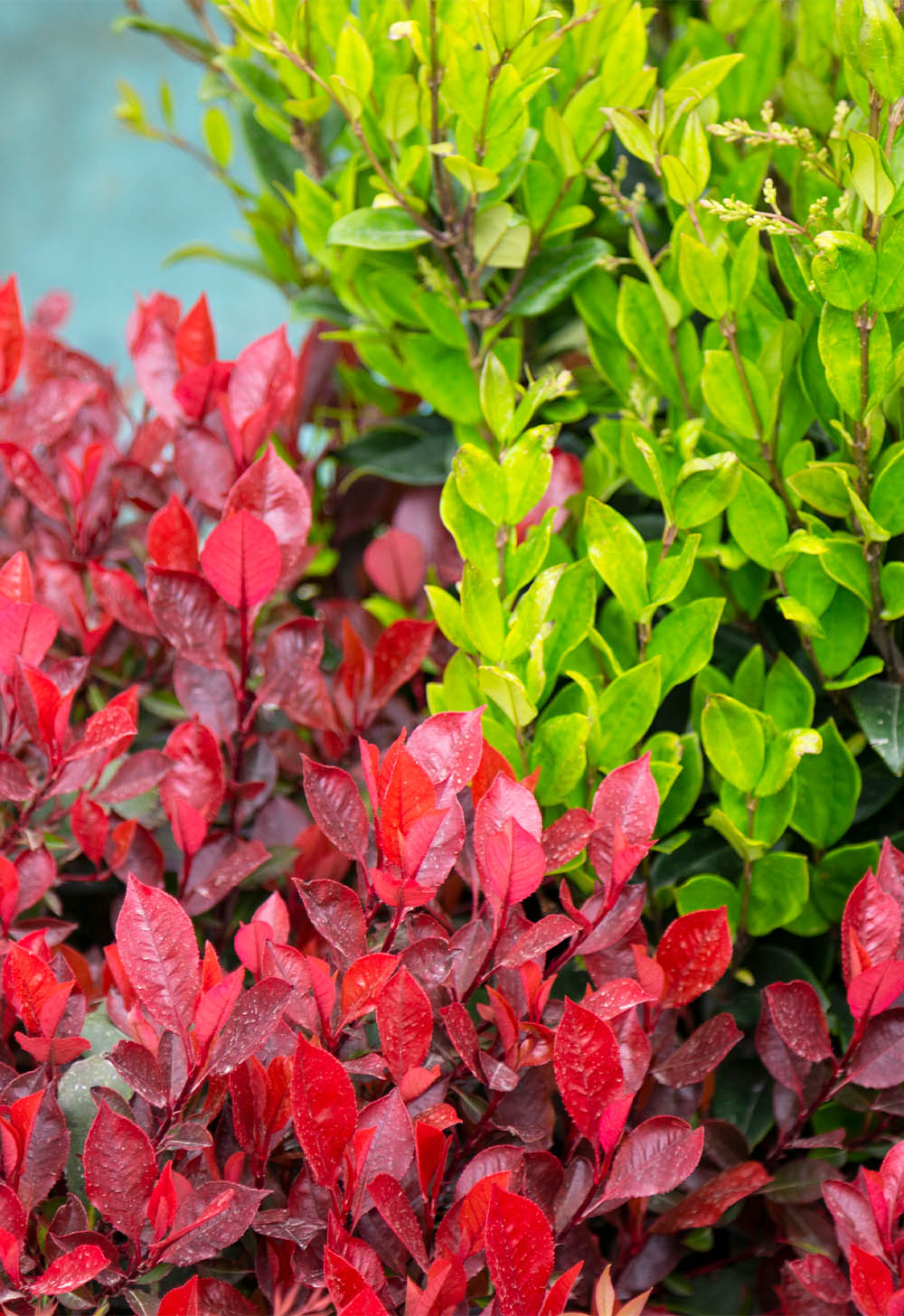
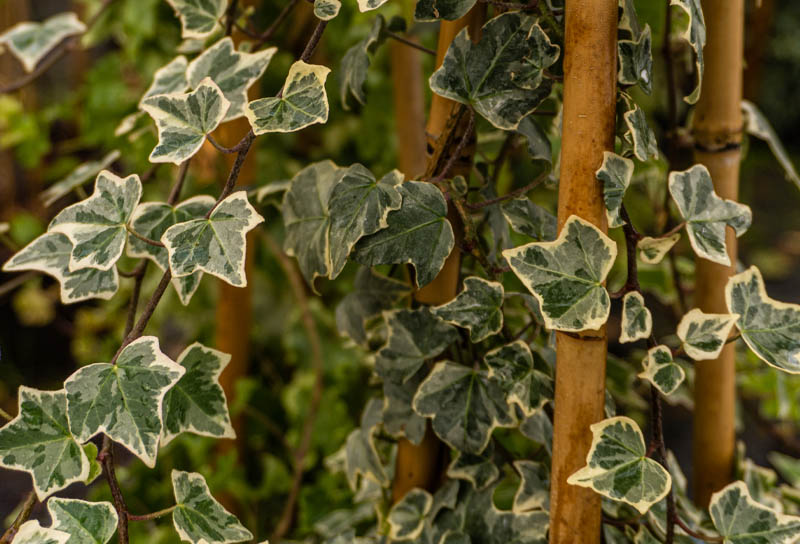
Hedera helix ‘Glacier’
Plants with acoustic reduction values:
Hedera helix – a fast growing, self-clinging climber with glossy, lobed diamond-shaped foliage when mature. Clusters of green-yellow flowers bloom in autumn, with black berries following in winter.
Ilex aquifolium – a slow growing evergreen species with spiny, green foliage and a bushy habit. Grows up to 10m, depending on the variety. White flowers usually emerge in late spring or summer, and pollinated, female plants produce striking red berries in autumn and winter. Great for growing as a specimen tree, clipped bush or hedging.
Prunus laurocerasus ‘Rotundifolia’ – a vigorous, dense shrub with dark green, glossy leaves. Long spikes of small, scented white flowers are produced in spring, followed by cherry-like red berries that darken to black. A useful hedging variety and grows well under trees.
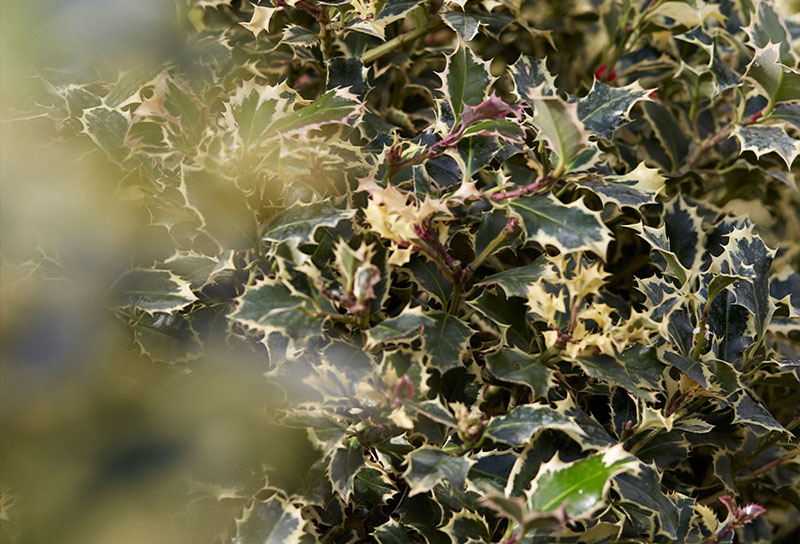
Ilex aquifolium ‘Argentea Marginata’

Prunus laurocerasus
Photinia × fraseri ‘Red Robin’ – a versatile, dense, erect shrub with bright red, young foliage that matures to dark green over time. Blooms clusters of creamy white flowers from April, which are sometimes followed by red fruits. A great low maintenance planting option and works well for hedging and screening.
Viburnum tinus – clusters of white flowers are followed by blue-black berries in autumn. A long flowering period provides good winter interest for shady borders. Good for screening and hedging.
Buxus sempervirens – a slow growing evergreen shrub that grows up to 5m in height. It has glossy, dark green leaves and its dense structure is ideal for trimming into various topiary shapes.
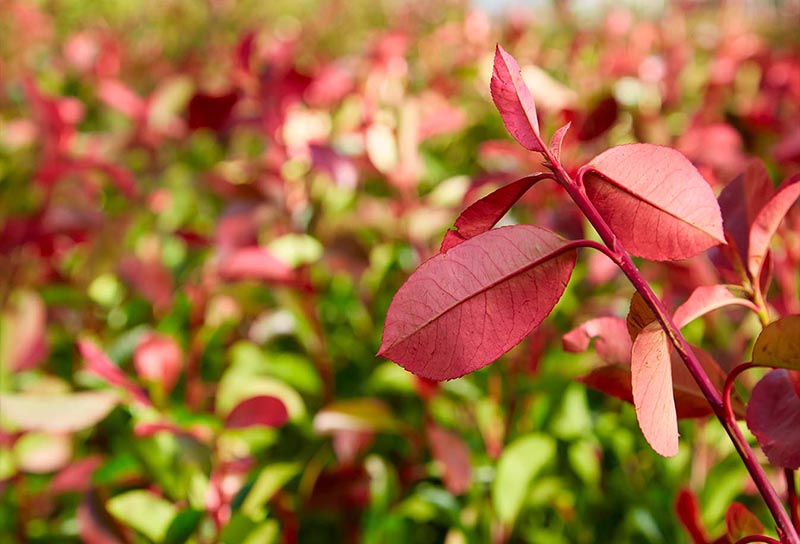
Photinia × fraseri ‘Red Robin’
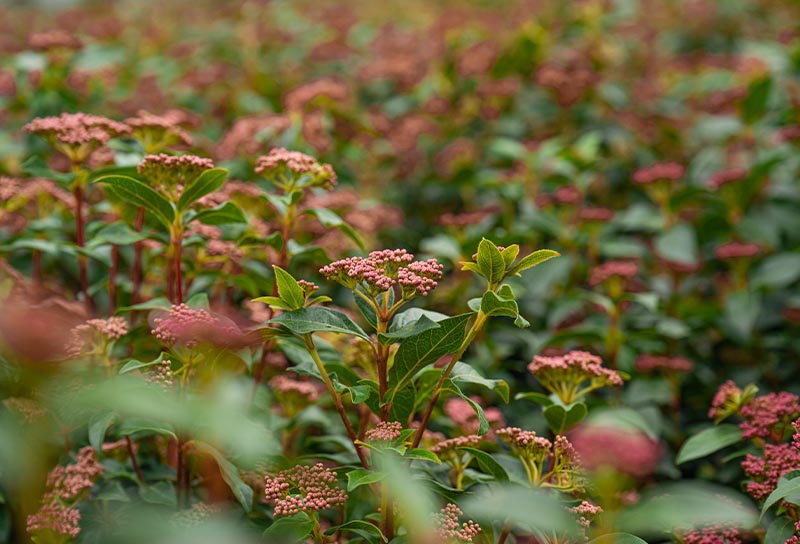
Viburnum tinus ‘Eve Price’
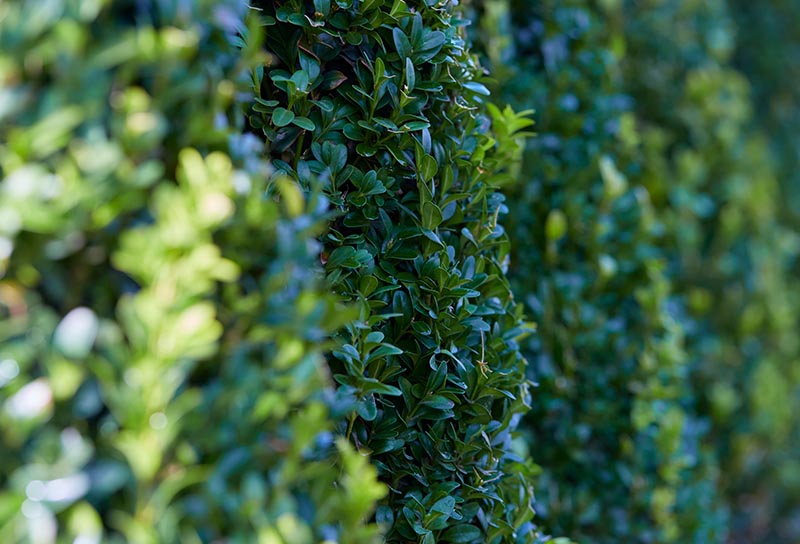
Buxus sempervirens
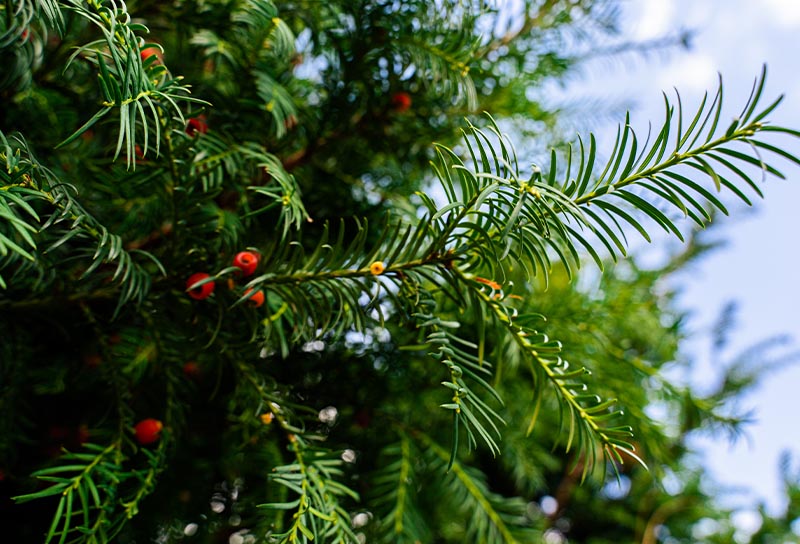
Taxus baccata
Taxus baccata – a bushy evergreen with very dark green leaves. Insignificant flowers are followed by fleshy red fruits on female plants. Forms a dense formal hedge and can be clipped into topiary shapes.
Ligustrum vulgare – a bushy, deciduous shrub with lance-shaped, green foliage and small, white summer flowers. Produces purple to black berries in autumn. great for wildlife as nesting spot or food source.
Cupressocyparis leylandii – a fast growing conifer with mid green, citrus scented foliage. Its density and growth rate makes it excellent for hedging, as it helps to reduce noise and provide privacy.

Ligustrum vulgare
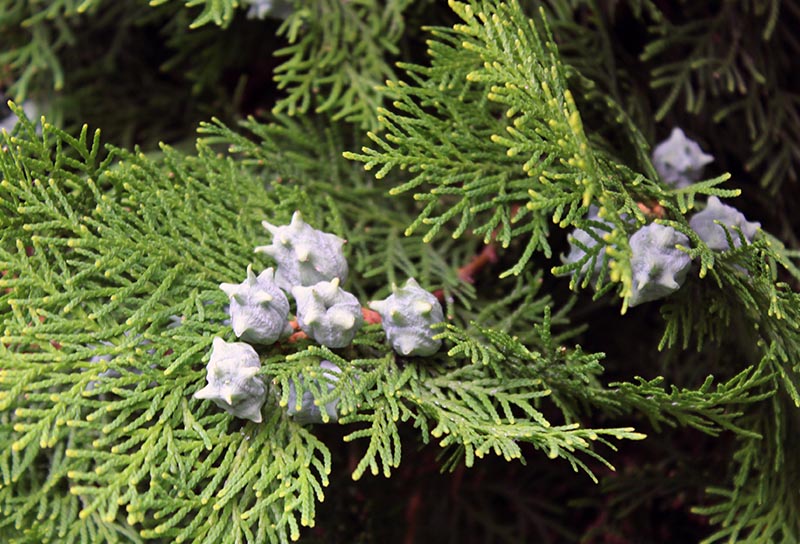
Cupressocyparis leylandii
Other things to consider:
Both high density planting and using layers of plants will help reduce noise further. It is also important to find plants that will not only survive, but thrive in the unique conditions of the landscape or garden, for it to be most effective. Implementing a carefully considered selection of plant varieties, tailored to the specific environment, not only improves noise reduction but also contributes to the landscape’s general health and aesthetic.
It’s also crucial to choose plants that are long lasting, ensuring the durability and optimum effectiveness of your sound barrier. Beyond longevity, certain plants possess qualities that enable them to thrive in built-up areas. Take, for instance, Prunus laurocerasus as described above and Photinia fraseri x Red Robin, which both tolerate air pollution such as traffic fumes.
While the growing issue of noise pollution is a cause for concern, there are effective ways to mitigate its impact. Incorporating plants with ‘acoustic reduction’ values into planting schemes emerges as a practical and environmentally friendly solution, contributing not only to a quieter environment but also fostering a positive coexistence between nature and urban life.
If you have any questions regarding the suggested plants mentioned above, or any other plant-related enquiries, please contact the G Team, who are willing to support you.

